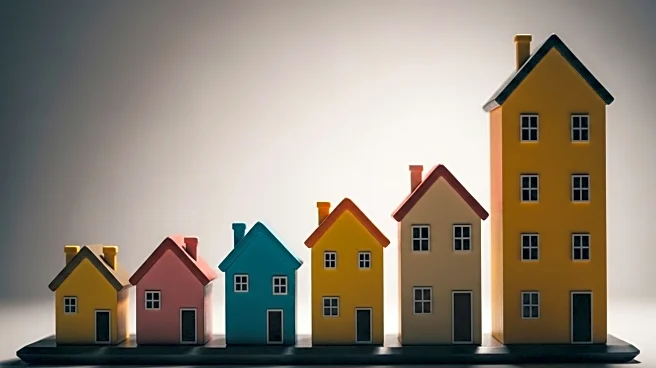What's Happening?
A new report highlights the significant impact of rising mortgage rates on home affordability in the U.S., with only 28% of homes now affordable for median-income buyers. Despite a 15.7% increase in wages since 2019, borrowing costs have outpaced income growth, reducing the maximum affordable home price to $298,000. The report identifies Milwaukee and Houston as the metros experiencing the most significant declines in buying power, with affordability dropping by 9-10.5%. The data underscores the challenges faced by potential homebuyers in a market characterized by high interest rates and limited affordable options.
Why It's Important?
The decline in home affordability poses significant challenges for the U.S. housing market and broader economy. As mortgage rates remain elevated, potential buyers are finding it increasingly difficult to enter the market, which could lead to reduced demand and slower economic growth. The affordability crisis may also exacerbate social and economic inequalities, as lower-income households struggle to secure housing. Policymakers and industry stakeholders may need to explore solutions to address these challenges, such as increasing housing supply or implementing measures to stabilize mortgage rates.
What's Next?
The ongoing affordability crisis may prompt further discussions on housing policy and economic strategies to support homebuyers. Potential measures could include incentives for affordable housing development, adjustments to mortgage lending practices, or interventions to stabilize interest rates. As the market continues to evolve, stakeholders will need to monitor economic indicators and housing trends to ensure that policies effectively address the needs of diverse communities and support sustainable growth.












